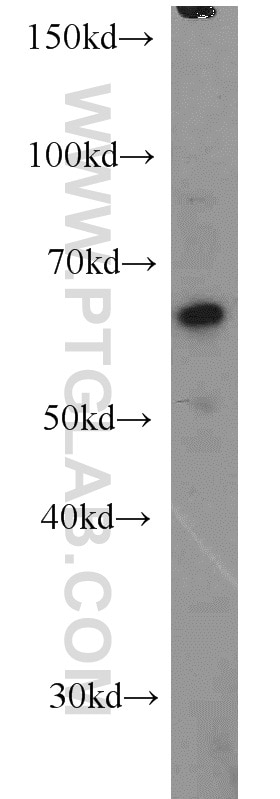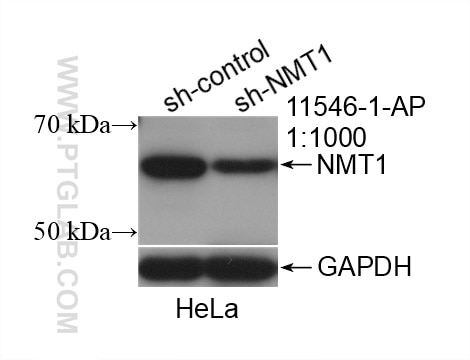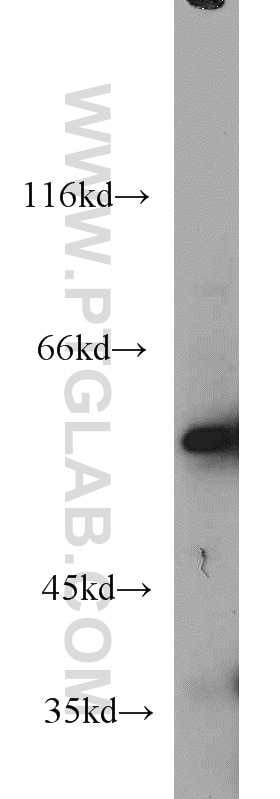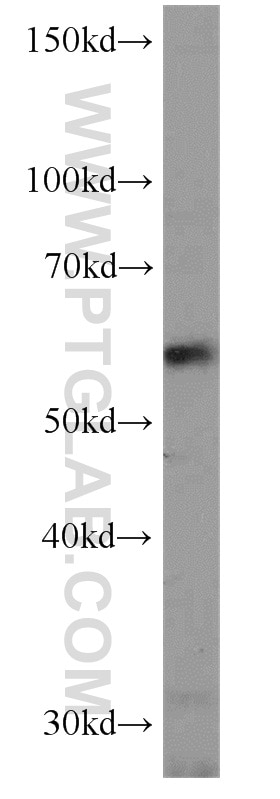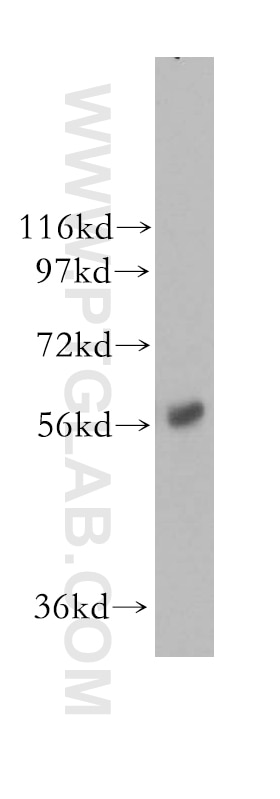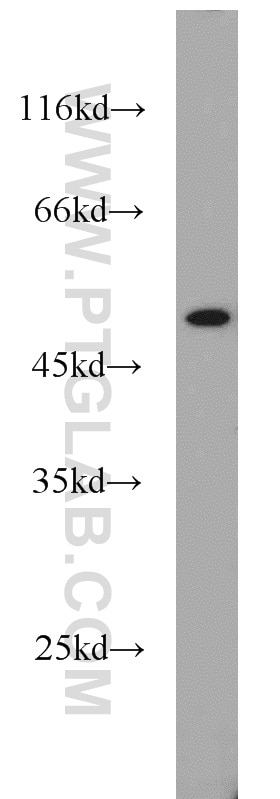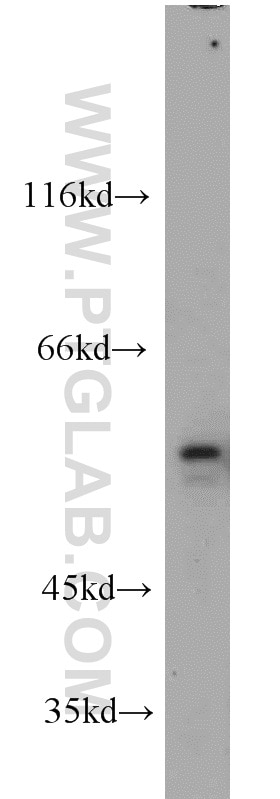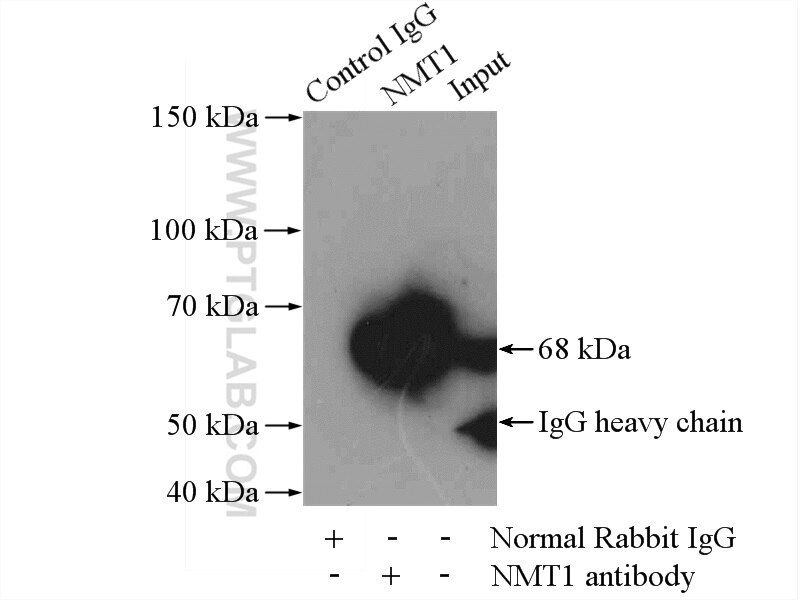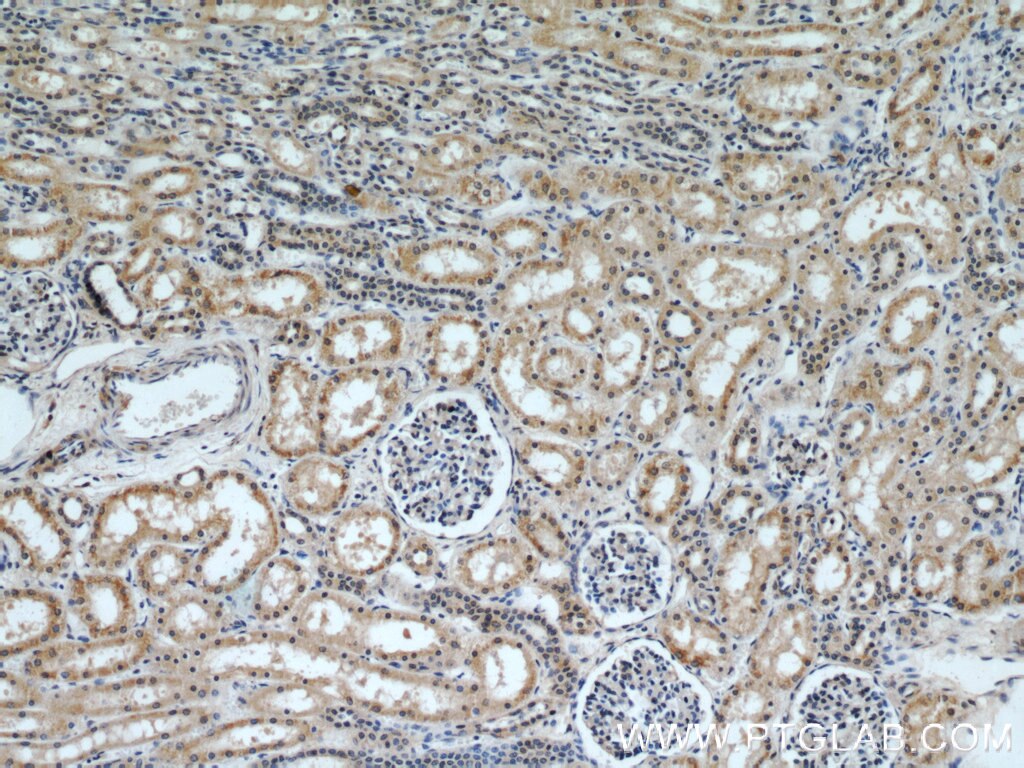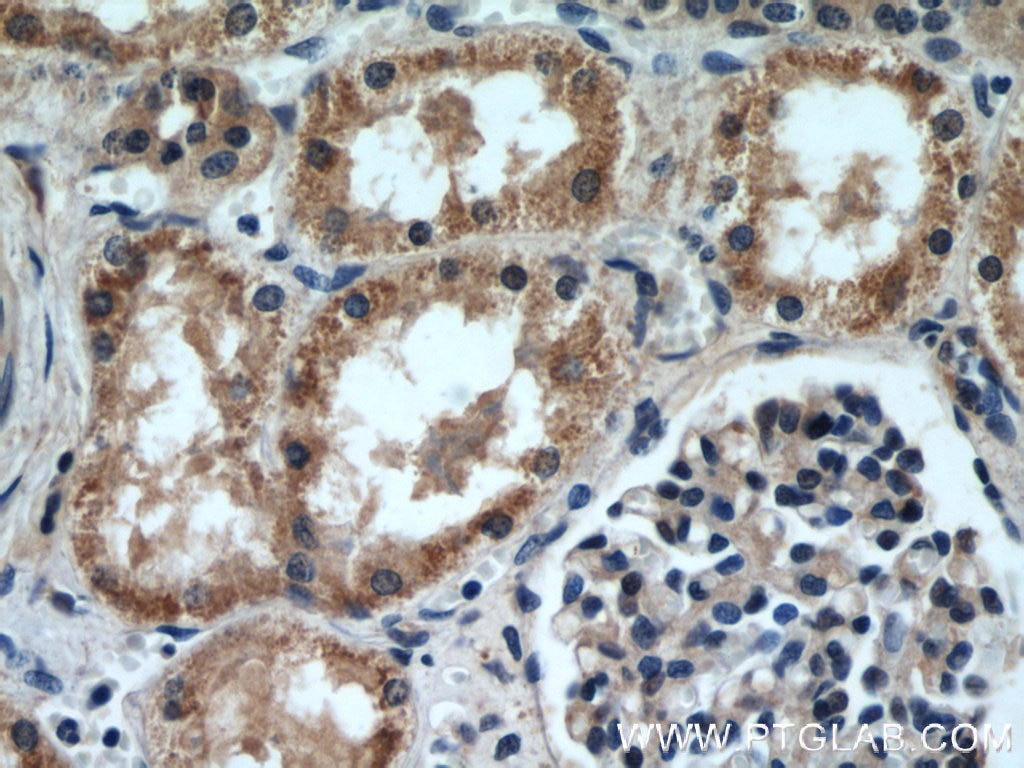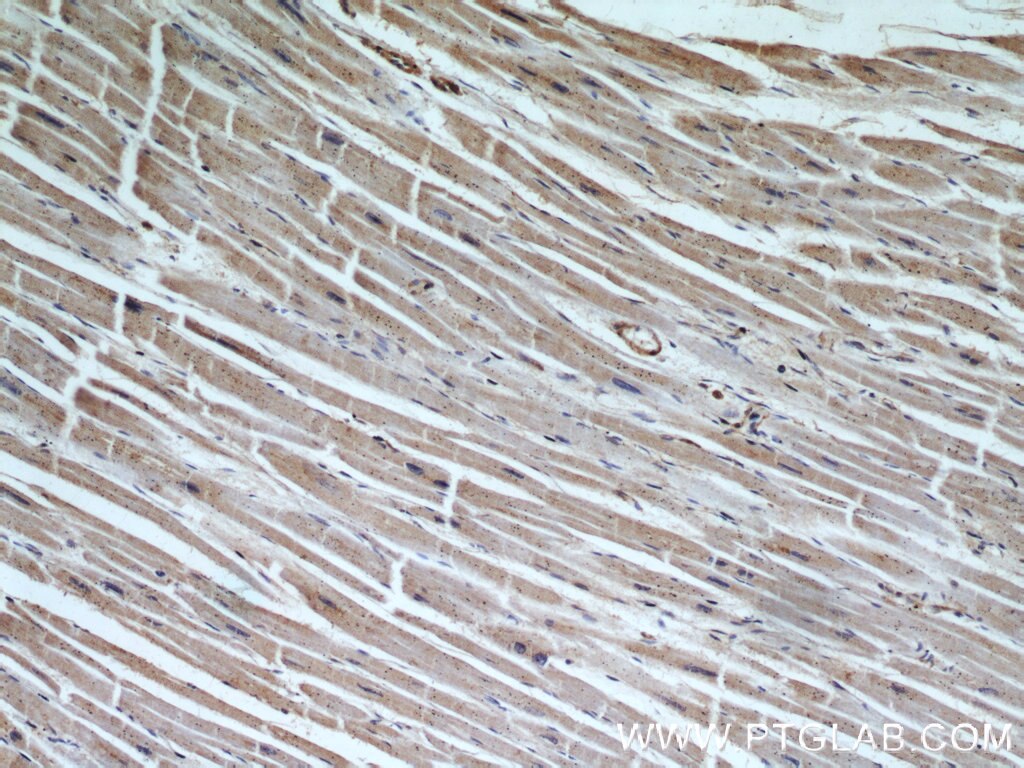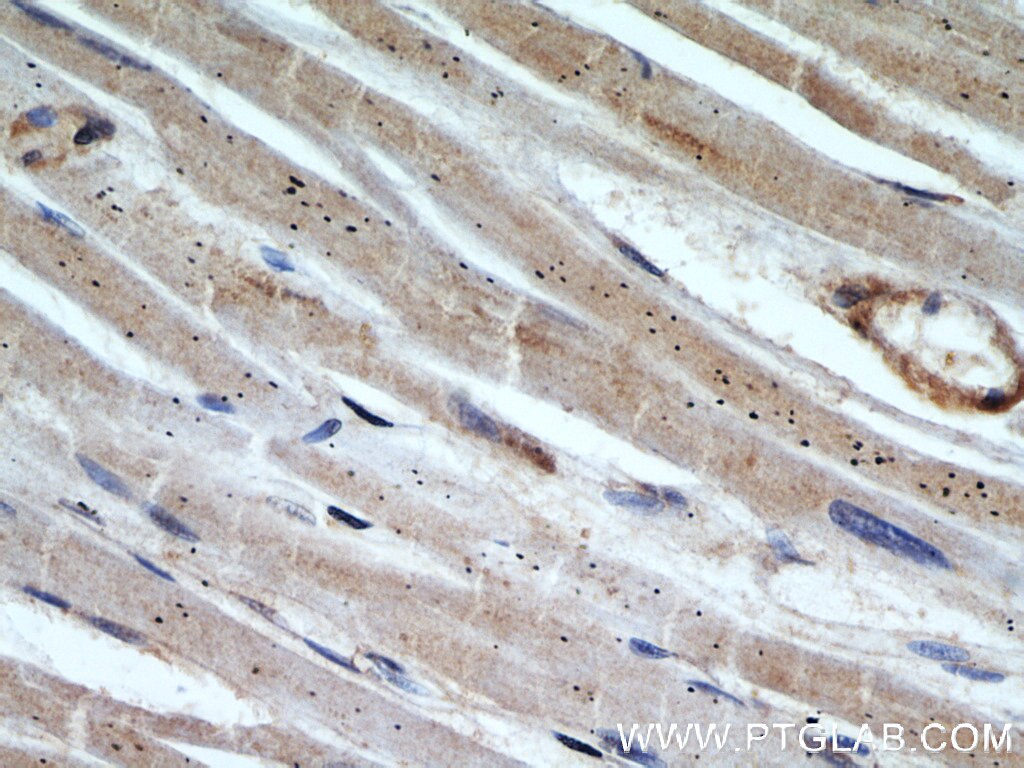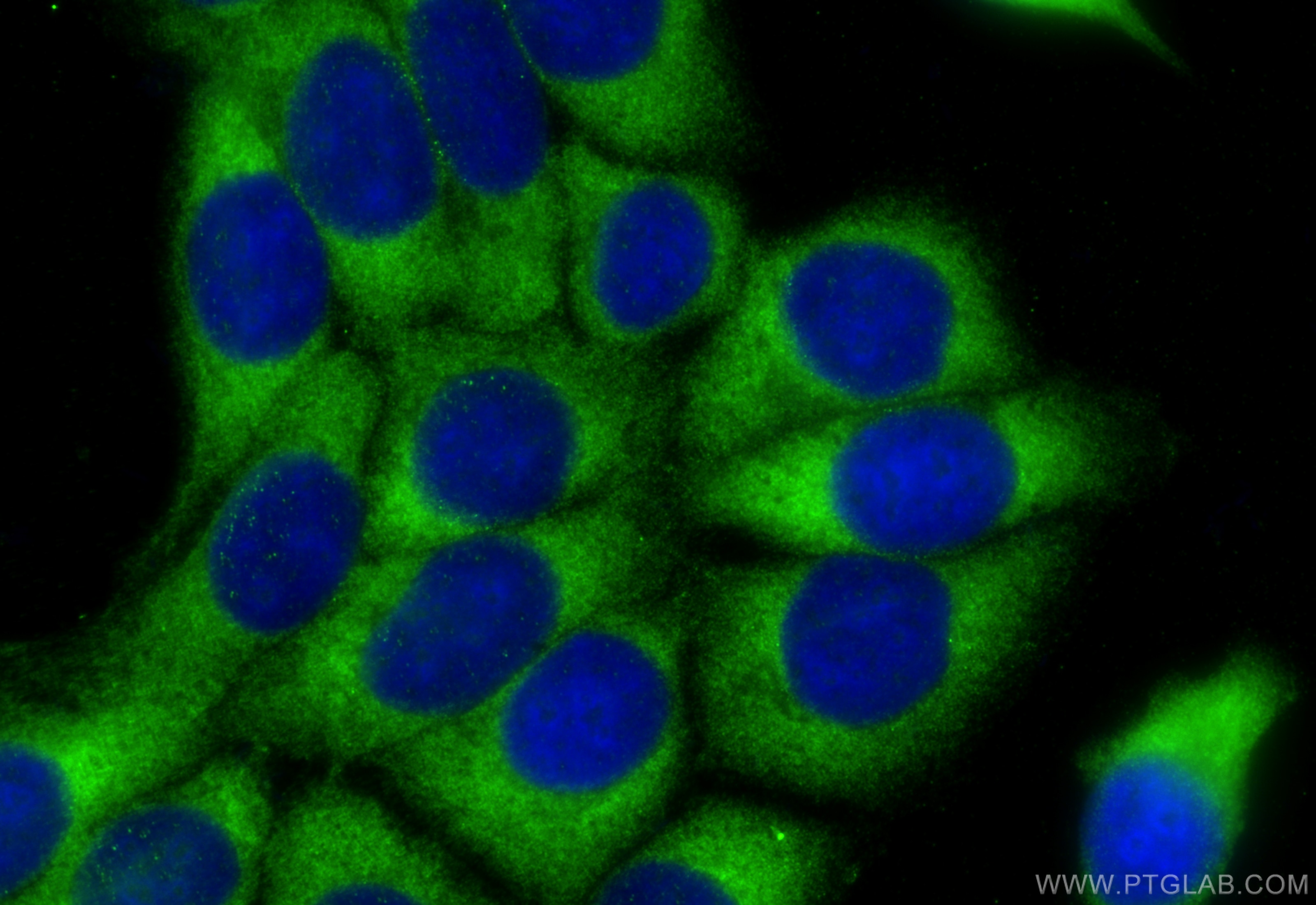Tested Applications
| Positive WB detected in | SKOV-3 cells, PC-3 cells, mouse pancreas tissue, HeLa cells, L02 cells, human kidney tissue |
| Positive IP detected in | HeLa cells |
| Positive IHC detected in | mouse kidney tissue, human heart tissue, human kidney tissue Note: suggested antigen retrieval with TE buffer pH 9.0; (*) Alternatively, antigen retrieval may be performed with citrate buffer pH 6.0 |
| Positive IF/ICC detected in | MCF-7 cells |
Recommended dilution
| Application | Dilution |
|---|---|
| Western Blot (WB) | WB : 1:500-1:2000 |
| Immunoprecipitation (IP) | IP : 0.5-4.0 ug for 1.0-3.0 mg of total protein lysate |
| Immunohistochemistry (IHC) | IHC : 1:50-1:500 |
| Immunofluorescence (IF)/ICC | IF/ICC : 1:200-1:800 |
| It is recommended that this reagent should be titrated in each testing system to obtain optimal results. | |
| Sample-dependent, Check data in validation data gallery. | |
Published Applications
| KD/KO | See 2 publications below |
| WB | See 8 publications below |
| IHC | See 3 publications below |
| IF | See 2 publications below |
Product Information
11546-1-AP targets NMT1 in WB, IHC, IF/ICC, IP, ELISA applications and shows reactivity with human, mouse, rat samples.
| Tested Reactivity | human, mouse, rat |
| Cited Reactivity | human, mouse |
| Host / Isotype | Rabbit / IgG |
| Class | Polyclonal |
| Type | Antibody |
| Immunogen |
CatNo: Ag2072 Product name: Recombinant human NMT1 protein Source: e coli.-derived, PGEX-4T Tag: GST Domain: 1-301 aa of BC006569 Sequence: MADESETAVKPPAPPLPQMMEGNGNGHEHCSDCENEEDNSYNRGGLSPANDTGAKKKKKKQKKKKEKGSETDSAQDQPVKMNSLPAERIQEIQKAIELFSVGQGPAKTMEEASKRSYQFWDTQPVPKLGEVVNTHGPVEPDKDNIRQEPYTLPQGFTWDALDLGDRGVLKELYTLLNENYVEDDDNMFRFDYSPEFLLWALRPPGWLPQWHCGVRVVSSRKLVGFISAIPANIHIYDTEKKMVEINFLCVHKKLRSKRVAPVLIREITRRVHLEGIFQAVYTAGVVLPKPVGTCRYWHRSL Predict reactive species |
| Full Name | N-myristoyltransferase 1 |
| Calculated Molecular Weight | 496 aa, 57 kDa |
| Observed Molecular Weight | 49-68 kDa |
| GenBank Accession Number | BC006569 |
| Gene Symbol | NMT1 |
| Gene ID (NCBI) | 4836 |
| RRID | AB_2153157 |
| Conjugate | Unconjugated |
| Form | Liquid |
| Purification Method | Antigen affinity purification |
| UNIPROT ID | P30419 |
| Storage Buffer | PBS with 0.02% sodium azide and 50% glycerol, pH 7.3. |
| Storage Conditions | Store at -20°C. Stable for one year after shipment. Aliquoting is unnecessary for -20oC storage. 20ul sizes contain 0.1% BSA. |
Background Information
NMT1 is a N-myristoyltransferase responsible for the transfer of myristate from CoA to an amino-terminal glycine of many eukaryotic proteins, which facilitates the targeting of proteins to membrane surfaces and is essential for viability of the organism. Insertional mutagenesis of the Nmt1 gene in Saccharomyces cerevisiae causes recessive lethality. Humans and mice possess two distinct but structurally similar enzymes, NMT1 and NMT2, ubiquitously expressed in most human and mouse tissues. Western analysis revealed that there are 4 isoforms of NMT1 with apparent molecular masses ranging from 49 to 68 kDa. In cell fractionation studies, the 68-kDa NMT1 isoform and NMT2 were present in both membrane and cytoplasmic fractions, while the smaller NMT1 isoforms were predominantly cytoplasmic.
Protocols
| Product Specific Protocols | |
|---|---|
| IF protocol for NMT1 antibody 11546-1-AP | Download protocol |
| IHC protocol for NMT1 antibody 11546-1-AP | Download protocol |
| IP protocol for NMT1 antibody 11546-1-AP | Download protocol |
| WB protocol for NMT1 antibody 11546-1-AP | Download protocol |
| Standard Protocols | |
|---|---|
| Click here to view our Standard Protocols |
Publications
| Species | Application | Title |
|---|---|---|
Brain Interactome screening of C9orf72 dipeptide repeats reveals VCP sequestration and functional impairment by polyGA. | ||
Cancer Lett N-myristoyltransferase-1 deficiency blocks myristoylation of LAMTOR1 and inhibits bladder cancer progression.
| ||
Cell Death Dis NMT1 inhibition modulates breast cancer progression through stress-triggered JNK pathway.
| ||
FASEB J Regulation of co- and post-translational myristoylation of proteins during apoptosis: interplay of N-myristoyltransferases and caspases. | ||
Biochem Biophys Res Commun N-myristoyltransferase 1 interacts with calnexin at the endoplasmic reticulum. | ||
Oncotarget Tris DBA palladium is highly effective against growth and metastasis of pancreatic cancer in an orthotopic model. |

